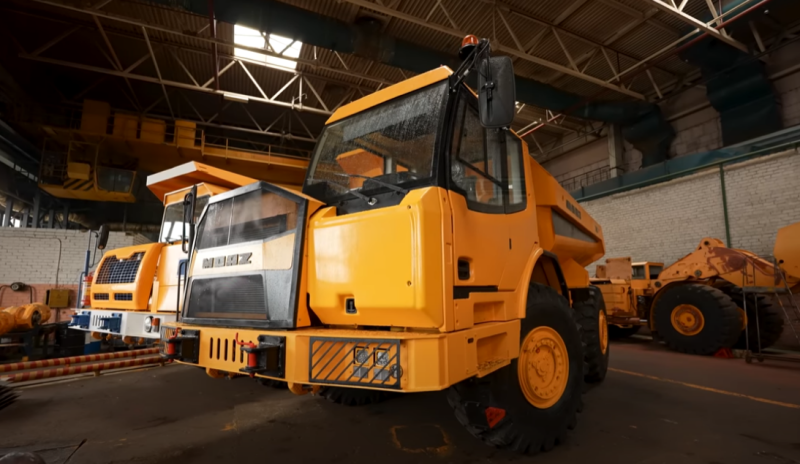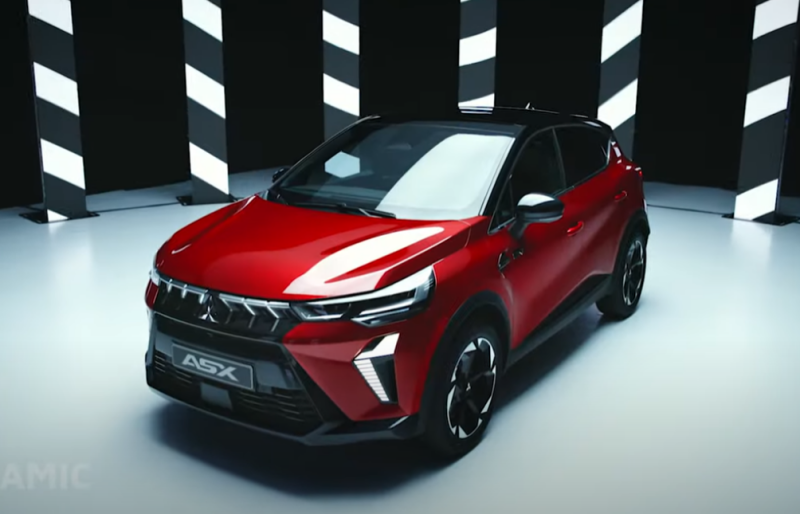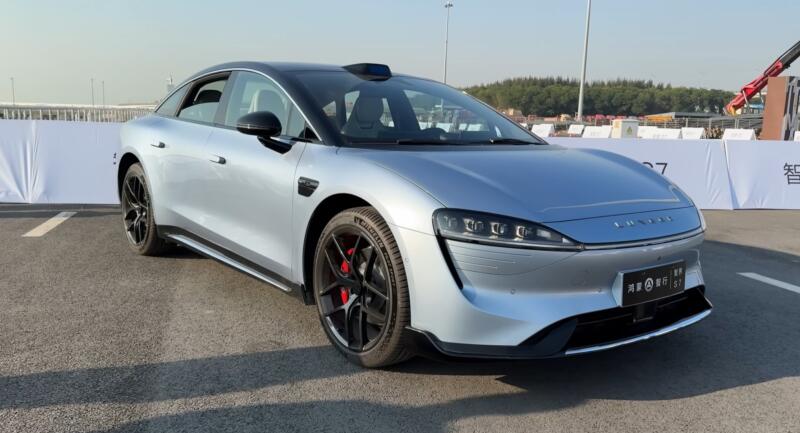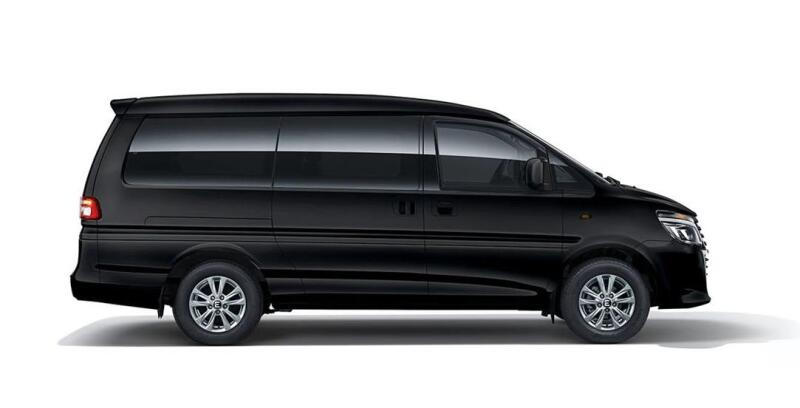Such cars were in demand, all the more it was believed that the Soviet auto industry made completely different models for export. There is much truth in this statement. Export "Lada" and "Zhiguli" really resisted corrosion better and broke less.
And everything is explained simply - the cars were assembled from the highest quality parts, the body was better processed and painted, the wiring was also different. Even now, when the year is 2023, export Ladas surprise with the state of the body.
 Export VAZ-21083. These were shipped to Germany. Photo: Youtube.com
Export VAZ-21083. These were shipped to Germany. Photo: Youtube.comSometimes even come across specimens that have not been touched by the hand of the welder. Of course, the merit here is rather caring Russian owners. They kept their export "swallow" in the garage and smeared all the hidden cavities with "cannon fat" and other vigorous anti-corrosion compounds.
But not only VAZ cars were delivered abroad. Now it's hard to believe it, but there was a time when Moskvich sent more than half of the produced cars abroad - in the 60s.
As for the VAZ models, they were sold not only in Europe, but also in North America. More specifically, in Canada. And there were even prerequisites for exporting cars to the United States. Moreover, local businessmen themselves wanted to become dealers. But it is better to tell everything in detail.
Sight for export
Now it is difficult to say how much the Volga Automobile Plant cost the Soviet Union. The fact is that the enterprise was built with the help of Italians.
Bought from Fiat management:
✅ License
✅ Equipment
✅ First car kits
I also had to hire foreign specialists to set up machines and train personnel.
 VAZ-2101 seemed to Soviet drivers the most modern car. Photo: Youtube.com
VAZ-2101 seemed to Soviet drivers the most modern car. Photo: Youtube.comThey spent a lot of money, and not rubles, but freely convertible currency. It had to be returned and earned. Even at the construction stage, it was assumed that the Zhiguli would be exported.
The situation for this was optimal - the Volga and Moskvich were rapidly losing popularity in capitalist Europe. Despite the low cost, they are hopelessly outdated. But the Zhiguli were still quite modern. Although, Fiat also cheated - in the late 60s it already became clear that the future belongs to front-wheel drive models. But the Soviet Union sold obsolete machines and the same technology.
"Zhiguli" immediately began to buy well in the capitalist countries. Despite the fact that these cars did not differ in modern design, they could not be called outdated either. But the price pleased.
Conquest of North America
In the late 70s, the Soviet Union decided to arrange the supply of VAZ to Canada. Then it was believed that in the United States there was no chance of success, but in a neighboring country you could try. Moreover, Skoda models were already sold there, and those were certainly no better than the rear-wheel drive classic VAZ.
 VAZ cars at the site of a Canadian dealer. Photo: Youtube.com
VAZ cars at the site of a Canadian dealer. Photo: Youtube.comLadaCanada Inc. was created especially for work in Canada. In 1978, deliveries and sales of VAZ cars began. The first was the most luxurious model of the Volga plant - VAZ-2106 or "Six".
At the same time, it is worth explaining why the Soviet Union did not want to try to trade with the United States. The fact is that since the 50s, cars have been massively equipped with automatic transmissions. Few people knew how to ride the "mechanics".
VAZ did not have the opportunity to launch the production of automatic transmissions, however, now there is no “automatic” in the manufacturer’s line either. Therefore, no one was going to the US market.
VAZ-2106 had to be modified for export. Soviet drivers were not told about the changes and the difference. Therefore, "foreign" cars immediately began to acquire legends and myths.
 Salon almost did not differ. Photo: Youtube.com
Salon almost did not differ. Photo: Youtube.comThe most popular bike is an increase in engine power from 1,6 liters to 115 hp. With. Say, this was achieved by installing a Weber sports carburetor.
Other legends about the export "Six":
✅ Thick spars with increased margin of safety
✅ Special body treatment
✅ Double coloring
✅ Special accessories
The only truth on this list is the use of the highest quality parts, but they were not made on purpose, but chosen from a mass of others. Plus the assembly was better so as not to lose face.
Real improvements
To sell cars in Canada, they had to be customized to meet the safety requirements of that country. For example, the bumpers were remade from a special aluminum alloy. Outwardly, they were similar to those installed on the Pyaterka and Niva, but were produced using a different technology.
 Massive bumpers were designed specifically for Canada. Photo: Youtube.com
Massive bumpers were designed specifically for Canada. Photo: Youtube.comThe bumper had to withstand a collision at speeds up to 5 miles per hour and remain intact. I had to strengthen it with hydraulic buffers. Otherwise, the car simply would not be allowed for sale.
Optics also had to be modified in accordance with Canadian rules:
✅ Sidelights have become orange
✅ Rear lights received red sections for direction indicators
✅ Reflectors in the wings were replaced with marker lights
Interestingly, bars appeared in the doors of the Soviet car to increase the level of security. They were supposed to protect the driver and passengers from side impacts.
The engines for the "Canadian" "Sixes", which were called Lada 1500S there, initially installed 1,5 liters. Starting from 1984, the cars were equipped with a standard 1 cm600 engine for the Shokhi.
The power units had to be equipped with a catalyst and an adsorber. According to one of the Soviet legends, the "Six" for Canada even had a Check Engine indicator - the famous "Jackie Chan". In fact, there was nothing of the kind. But all control devices on the panel had inscriptions in English.
 Clipping from a Canadian magazine. Photo: Youtube.com
Clipping from a Canadian magazine. Photo: Youtube.comUnlike Soviet counterparts, the export "Six" received rear window heating. In the USSR, this option appeared much later.
Other Models
Oddly enough, but in Canada they bought the VAZ-2106. Not to say that a queue lined up behind the cars, but the cars were taken. Therefore, in 1980, Lada Trek began to be offered on the local market. So in Canada they called the VAZ-2121 "Niva".
In addition to bumpers and lights, the Soviet SUV was decorated with plastic lining, equipped with roof rails, new wheels and side mirrors. Local nature lovers liked the Niva.
Delivered to Canada and other classic VAZ cars. These are models from 2104 to 2107. All cars were finalized in accordance with local requirements, plus they tried to ennoble them with all kinds of body kit and interior modifications.
 So Canadian dealers finalized the Niva. Photo: Youtube.com
So Canadian dealers finalized the Niva. Photo: Youtube.comCame to North America and popular in the USSR "Chisel". Meaning "Lada" 2108/09. Sales began in 1987. Interestingly, there were about 40 dealerships in Canada.
The average price of a VAZ car in Canada is 5 thousand US dollars. These are the cheapest cars in the class, so they were bought. Annual sales started at 1 in 000 and ended at nearly 1978 in the 13s.
US and withdrawal from Canada
Businessmen from the United States of America became interested in Soviet cars immediately after their arrival on the continent. In 1979, a company from New York wanted to sign a contract with the USSR.
 Soviet cars at some gas stations even stopped serving. Photo: Youtube.com
Soviet cars at some gas stations even stopped serving. Photo: Youtube.comBut the entry of Soviet troops into Afghanistan put an end to these plans. Moreover, the attitude towards cars has changed even in Canada - many have begun to refuse them.
Despite the problems, Ladas were sold until 1997. The latest models had fuel injection. But back in the early 90s, it became clear that cars were hopelessly outdated. This was the end of the history of cooperation between AvtoVAZ and Canada.
By the way, Zhiguli and other Soviet models are still sometimes found in the United States. But it is worth thanking immigrants from the former USSR for this. Some people buy cars that remind them of a happy and carefree childhood.










